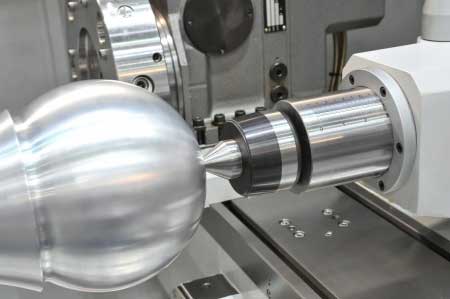Traditionally 3D printing, or ‘Additive Manufacture’ has been used mainly to create prototypes and showcase design ideas. The speed with which Additive Manufacture (AM) can take place along with the versatility of the manufacture method causes it to be the most obvious choice when creating new designs.
An example of where AM is still being used for it’s traditional versatility is the surgeons of Great Ormond Street Hospital using a 3D printer to create a model of a patients’ Trachea. The surgeons had to perform a delicate surgery on a child. They used a CT scanner to map the boys’ Trachea, 3D printed an exact model of it and then assessed which surgical instruments fit the tiny spaces best.
However AM is moving into new ground, increasingly it is being used to produce parts intended for final products, rather than merely prototypes. With the ability to create truly unique parts for a fraction of the normal development cost AM is being increasingly used in industries that prize optimisation. In Aerospace lighter and stronger materials are always being sought, by perfecting each of the many thousands of small parts that make up a commercial aircraft an airline could save hundreds of kilos, even tons of weight on each flight. These weight savings translate directly into fuel savings.
Printing perfected parts can also represent significant savings in production costs. Where all the parts for an airline seat may have required many different injection moulding manufacture runs, all of these parts could be produced on the same printers using AM. Designs and shapes that could not be made using other methods can be with AM.
3D printing is at it’s most useful when the parts being made are low-volume, high-cost and high-complexity. This sweet-spot encompasses many industries, from medical to defence. Combining 3D modelling techniques with 3D printing allows for the production of a completely custom product every time for a fraction of the time and cost required by any other manufacture method. Various different models of 3D printers can use a huge variety of materials. Whether they need to withstand high temperatures or be suitable for using inside the human body. Transferring lessons used in one industry to another is spurring an incredible pace of development. The Aerospace and Medical applications of 3D printing often have striking similarities, namely the need for high strength, low weight materials.
The versatility of a 3D printer makes them an ideal machine to install in remote locations. Often in Combat Arenas or remote medical centres there are vital parts required that can take prohibitive amounts of time and money to ship from where they are manufactured half a world away. 3D printed parts are already being used in Unmanned Ariel Vehicles and on Tornado fighter jets. With the right set of designs you could have a 3D printer creating all of the plastic parts needed for a remote clinic in rural Africa and the same model of printer churning out parts for the medical centre and the armoury on an aircraft carrier in the middle of the Pacific. Read more detail on the specific projects here.
As of right now AM is still only just breaking into production. For many it is still a little too slow or a little too new to be phased into their production processes completely. The pace of advancement in 3D printing is phenomenal, the materials we are printing with now didn’t exist 10 years ago.
PRV Engineering offer premium AM services for a wide range of clientèle across a vast array of industries. From one off design work to ongoing part manufacture. If you a need for engineering solutions contact PRV Engineering.


Recent Comments